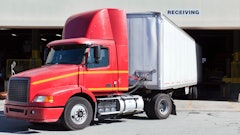While most drivers are honest, there are a percentage who succumb to opportunity and temptation, which will negatively impact your bottom line. Over the years, we have apprehended drivers who were stealing on a regular basis. Some of these truckers were making more than $100,000 a year from these illicit transactions.
One of the most effective ways to combat trucker dishonesty is covert surveillance. This form of observation will document several key areas of concern, including:
- Deviation from assigned routes for the purpose of selling cargo for cash;
- Prolonged or additional break periods, which cause unnecessary overtime;
- Unauthorized persons riding in trucks, which creates liability in the event of an accident;
- Operation of the vehicle in a negligent or impaired manner, which also could lead to costly litigation; and
- Leaving trucks unsecured, and therefore susceptible to break and entry or hijacking.
Some distributors make the mistake of having trucks watched only when a problem is suspected. This reactive ap-proach, however, is less effective than a proactive one because most distributors don't really know when drivers steal time, sell product, or drive trucks under the influence until these problems become extreme. Additionally, it's been repeatedly proven that if company drivers know that they operate completely on their own, with no external control, they're more inclined to become dishonest or negligent.
Consequently, it's more cost effective to maintain an on-going surveillance program, even if it only entails just two or three surveillances each month. When this program is publicized to the drivers, it not only provides a means of detecting driver dishonesty and negligence, but acts as an effective psychological deterrent.
In conjunction with these surveillances, it's a good idea to have drivers maintain logs that list times of arrival and departure from each delivery as well as break times. In cases where drivers steal product and/or time, log sheets combined with formal surveillance reports, will prove invaluable. A driver making an unauthorized delivery or prolonging a break will have to cover it up on his log sheet by falsifying one or more entries. When the driver submits his falsified log sheet at the end of the day, and it's compared to the investigator's surveillance report, it will become obvious to any arbitrator that the driver not only stole product and/or time, but that he attempted to deceive the company by misrepresenting his location.
Overt Surveillance Sheds Light
Overt (also referred to as non-covert) surveillances are equally important. In this form of surveillance, the investigator makes himself known only when the driver reaches his first stop. From that point on, the investigator observes every delivery the driver makes, checking off each piece the driver delivers from his own copy of the shipping documents. After the driver's last delivery, an overt surveillance can provide some very interesting results.
If, for example, the driver still has several cases of unaccountable product in the cargo area of his truck, the following questions are raised:
- Was it a careless shipping mistake, or was the product deliberately overloaded by a co-worker?
- Did the driver know his truck had extra product, and if so, did he intend to sell it for cash had the investigator not been with him all day?
- How did the overage get past the checker assigned to the truck in question?
From a financial perspective, it is irrelevant why the extra product was loaded. Whether it was dishonesty or negligence, if a driver fails to return overage, it ultimately causes the same financial loss.
Those checkers consistently committing unacceptable levels of error (which include misselections and shortages) should be warned, disciplined, and if necessary, terminated, using the formal surveillance reports as documentation.
Another aspect of an overt surveillance is to compare a driver's time when he was being audited to the time he typically takes when doing the same route. If the driver, while being monitored, can do that same route in record time, you may want to target him for a covert surveillance.
When an on-going surveillance program is in place, employee accuracy and integrity tends to stay high, which is exactly what you want to achieve. Remember, the secret to a successful asset protection program is prevention, i.e., keeping your workforce honest, not apprehension.




























